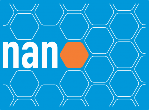Banca de QUALIFICAÇÃO: ARTHUR DA SILVA SOUSA SANTOS
Uma banca de QUALIFICAÇÃO de MESTRADO foi cadastrada pelo programa.STUDENT : ARTHUR DA SILVA SOUSA SANTOS
DATE: 29/02/2024
TIME: 14:00
LOCAL: Santo André
TITLE:
Machine learning as a methodology for studying high entropy oxidesPAGES: 50
BIG AREA: Engenharias
AREA: Engenharia de Materiais e Metalúrgica
SUBÁREA: Materiais Não-Metálicos
SPECIALTY: Cerâmicos
SUMMARY:
High-entropy oxides (HEOs) are an emerging class of materials with diverse applications, e.g., energy conversion and storage technologies, that have gained significant interest due to their unique structure, complex stoichiometry, and synergistic effect related to high entropy. Despite the increasing number of reported studies related to HEOs in recent years, compelling explanations about their structural properties, electrochemical activities and effects related to high entropy are still lacking. In the present work, a new methodology for studying the formation of stable phases of HEOs based on machine learning is proposed. Initially data on stable single-phase HEOs and their compositions were manually mined from the literature, as well as some tests using “large language models” (LLMs) are underway. Once the raw data was collected, the “feature engineering” stage was carried out based on descriptors based on the physical, chemical and thermodynamic properties of the atoms and oxides that make up the system; always using a scheme of five arithmetic operations for vectorization. Descriptors are a guiding tool for describing the stability of single-phase solid solutions and have been identified as crucial for accurately predicting newly designed systems. In total, more than 250 “features” were generated, which went through different selection methods for the trained models, namely: elimination of “features” with high Pearson correlation, “Permutation Feature Importance” and “Exhaustive Features Selection”. Four machine learning models were trained, two direct artificial neural network architectures (“Multi Layer Percepton” and “Extreme Learning Machine”) and two decision tree architectures (“Random Forest” and “Gradient Boosting”). Once the models were trained, the next step was a combinatorial cation analysis study that allowed reducing the space of possible combinations of compositions for the predictions of the trained models and also allowed an increase in the chances of success, since the nature of the cations that may or may not be fixed in certain groups of combinations. Combinatorial analysis was also useful in considering only the atoms available in the laboratory. Finally, a synthesis study of materials with the fluorite crystalline structure was carried out and an adapted version of the hydrothermal synthesis method was carried out. Furthermore, X-ray diffraction was used on the synthesized samples to verify whether the fluorite phase predicted by the models was achieved. The theoretical results obtained were models with accuracies close to 90% with confidence intervals with lower limits close to 75%. More than that, the “features” selected by the models actually represent important quantities for the stabilization of HEO phases according to the literature (example: atomic radius, electronegativity, enthalpy, etc...), giving physical meaning to the models. Regarding the experimental part, two compositions suggested by the models as fluorite were unprecedentedly synthesized: (Ce,La,Nd,Mg,Zn)O and (Ce,La,Nd,Mg,Al)O. The X-ray diffraction pattern confirmed the fluorite phase in both cases. The fact that these two synthesis attempts using this methodology proposed here were the only synthesis attempts carried out and have already been successful gives even more credibility to the central proposition that machine learning can support studies on high entropy oxides.
COMMITTEE MEMBERS:
Presidente - Interno ao Programa - 1309493 - PEDRO ALVES DA SILVA AUTRETO
Membro Titular - Examinador(a) Interno ao Programa - 1760410 - JEVERSON TEODORO ARANTES JUNIOR
Membro Titular - Examinador(a) Externo à Instituição - MARCIO TEIXEIRA
Membro Suplente - Examinador(a) Interno ao Programa - 1282172 - ROBERTO GOMES DE AGUIAR VEIGA
Membro Suplente - Examinador(a) Interno ao Programa - 1957564 - CEDRIC ROCHA LEAO
Membro Suplente - Examinador(a) Externo à Instituição - AMAURI JARDIM DE PAULA




